Redmi Note 10 review: The everyday workhorse

Mục lục bài viết
Redmi Note 10
The Redmi Note 10 focuses on the everyday experience over raw performance. The main camera delivers, the build quality is excellent, and the classy design stands out among its more gaudy contemporaries. The negatives that are here are offset by the low price, making the Redmi Note 10 an easy recommendation for almost anyone looking for a no-nonsense budget smartphone.
The Redmi Note series spearheaded the commodification of high-spec smartphones. This is particularly true in India where, for a time, genuine competition was non-existent. However, that’s not the case anymore. realme, in particular, has been pushing back on Xiaomi’s monopoly with a steady release schedule of power-packed alternatives.
Enter the Redmi Note 10 — a thorough rethinking of the Xiaomi sub-brand’s beloved budget smartphone.
The Redmi Note 10 is a significant upgrade in aesthetics and build quality compared to its predecessors, yet it also maintains all the key tenets that make the series popular. In Android Authority‘s Redmi Note 10 review, we’ll see if a revamped design is enough to secure the company’s lead in the segment for another year.
Redmi Note 10
£149.00 at Amazon
A new version of this device is available: The Redmi Note 11 has arrived. It offers great battery life, impressive performance, and solid all-around build quality. Check out our
The Redmi Note 11 has arrived. It offers great battery life, impressive performance, and solid all-around build quality. Check out our Redmi Note 11 review
About this Redmi Note 10 review: I used the Redmi Note 10 for eight days running MIUI 12.0.1 on Android 11. The Redmi Note 10 review unit was provided to Android Authority by Xiaomi India for this review.
What you need to know about the Redmi Note 10
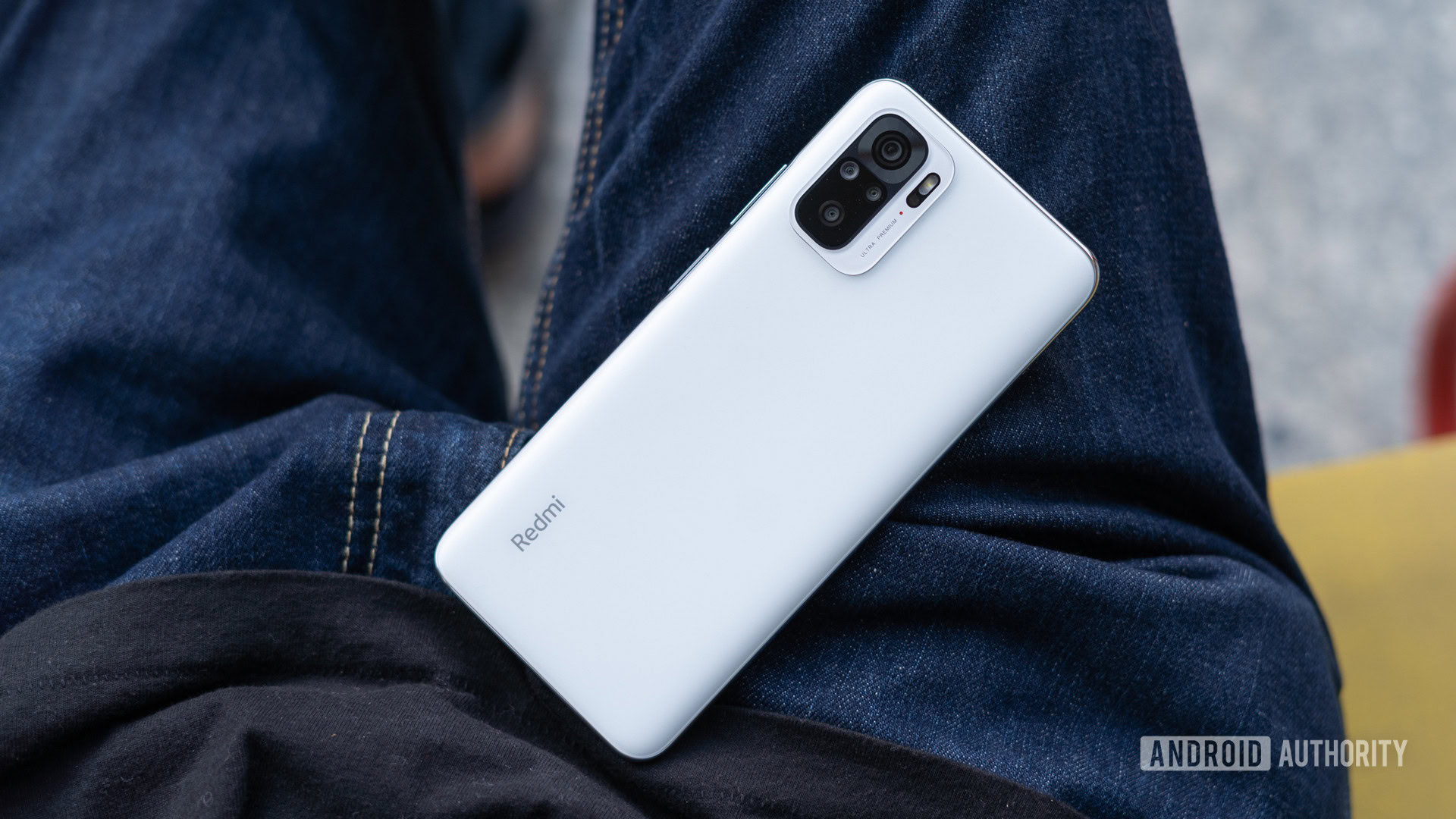
Dhruv Bhutani / Android Authority
- Redmi Note 10 (4GB/64GB): Rs. 11,999
- Redmi Note 10 (4GB/128GB): €199/£199
- Redmi Note 10 (6GB/128GB): Rs. 13,999
The Redmi Note 10 enters the highly competitive budget smartphone segment where it is going up against very strong alternatives in India and across Europe. The phone is bringing a fresh look that takes a lot from the top-end Redmi Note 10 Pro (or Note 10 Pro Max in India). It’s available in three different colors — Shadow Black, Frost White, and Aqua Green.
Which should you buy? Redmi Note 10 vs realme 8
In addition to the new design, the phone brings with it a spanking new Snapdragon 678 processor and 33W fast charging support. These additions come together to make the Redmi Note 10 a surprisingly well-rounded package, but it’s going up against phones like the POCO X3 and realme 8 that have already scoped out a strong following.
How’s the design of the Redmi Note 10?
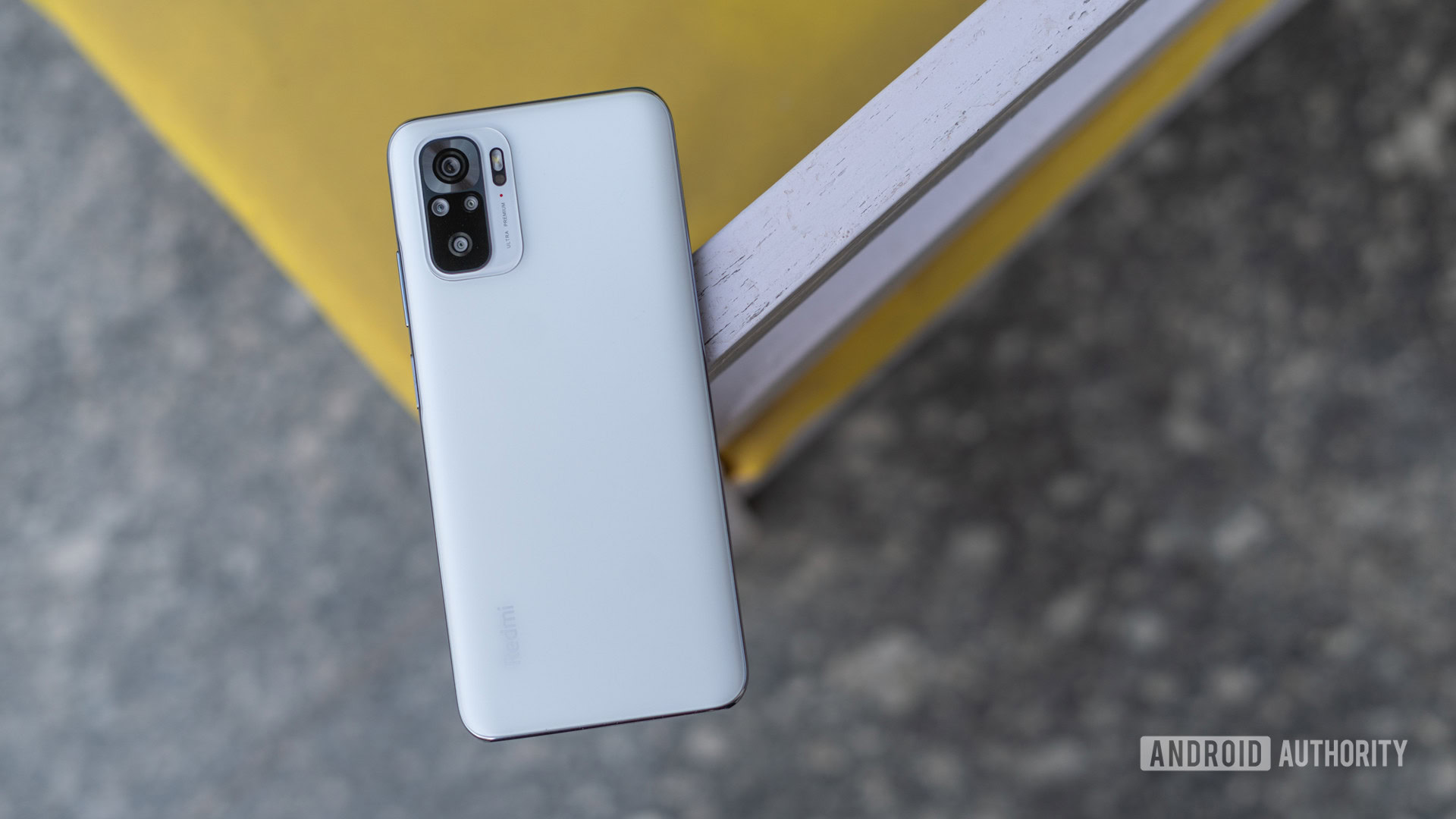
Dhruv Bhutani / Android Authority
There’s something to be said about Xiaomi’s constant iterations with design. Gradients are passé, and the Redmi Note 10 ushers in a design language that is supremely clean, and chic.
The Redmi Note 10 eschews the glass back for plastic owing to its budget positioning but nowhere does it look or feel cheap. In fact, I’d go as far as saying that this is the best-looking phone in the budget segment, despite the plastic mid-frame and back panel. There’s no sign of flex and the matte finish looks gorgeous — especially in white. Elsewhere, the camera island doesn’t stand too proud of the frame, and the dual-tone finish adds to the pleasing aesthetics.
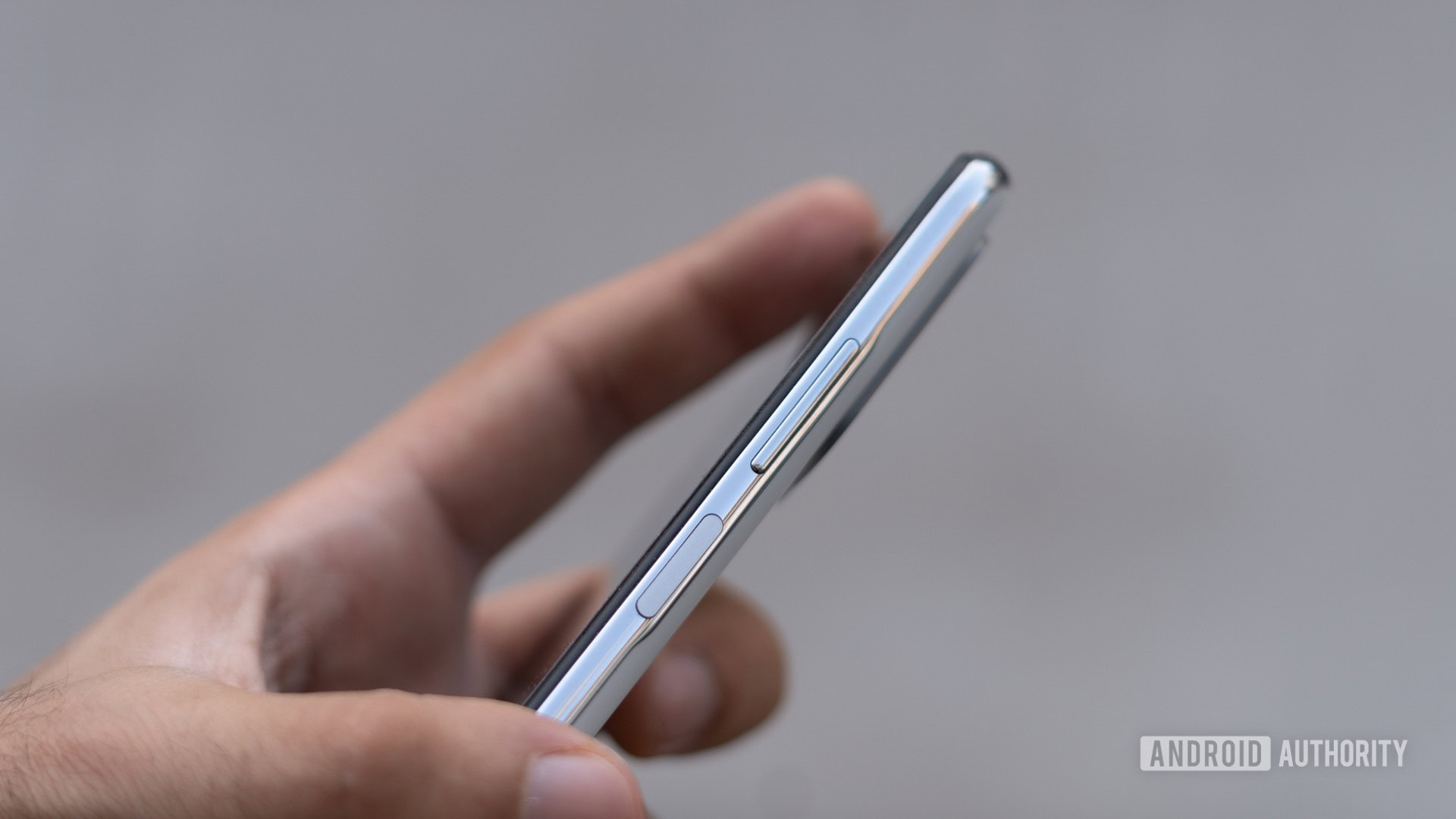
Dhruv Bhutani / Android Authority
Like most Redmi phones, the button layout and port selection are more than adequate for the money. Of note is a USB-C port and a 3.5mm audio jack, as well as stereo speakers.
The speakers stood out to me for the overall volume as well as the well-balanced setup. There’s not much bass, but that’s to be expected at this price. More importantly, vocals tend to distort at the top 20% of the volume. Anything below that will do just fine.
The Redmi Note 10 also has an IP53 rating for splash resistance — a rare and very welcome addition at this price point.
I like that Xiaomi has opted for side-mounted fingerprint scanners for much of its current mid-range portfolio. These tend to be a lot more reliable than cheap in-display scanners. That continues to be the case here, and I had no issues at all during my time with the phone. The side-mounted scanner successfully unlocked the phone each and every time.
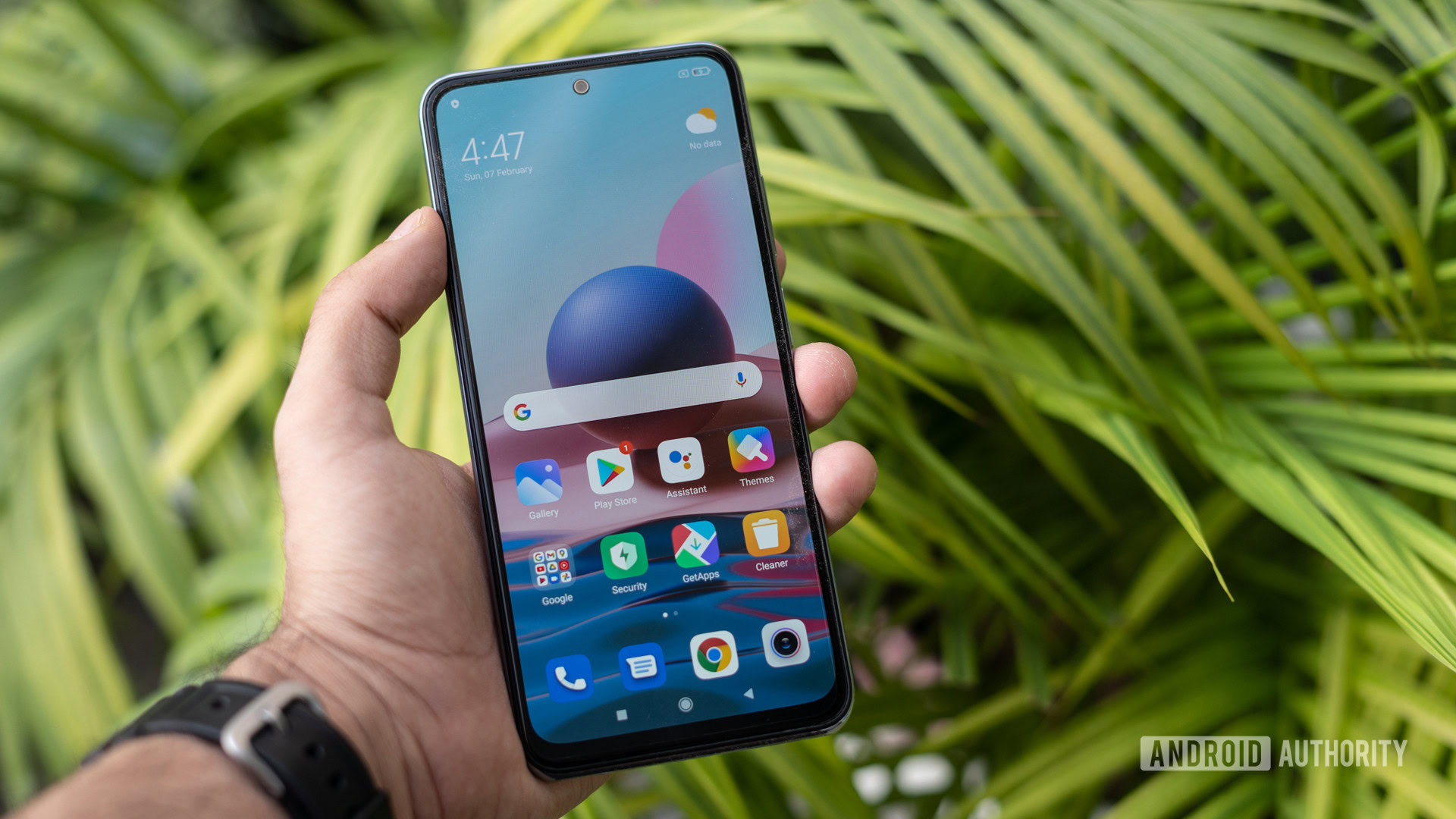
Dhruv Bhutani / Android Authority
The switch over to an OLED panel on the front has done wonders for this year’s standard Redmi Note phone. The Redmi Note 10 packs a 6.43-inch Super AMOLED Full HD+ screen that looks glorious. It’s also protected by Gorilla Glass 3 for scratch resistance.
The lack of a high refresh rate panel is questionable at a glance. After all, other budget phones like the POCO X3 have started pushing 120Hz refresh rates. However, many of these devices ship with IPS LCD displays instead of the high-quality AMOLED you get with the Redmi Note 10. We’re still a ways from getting a high refresh rate AMOLED panel in this category, and the one here should please most users even at 60Hz.
Xiaomi has done an excellent job with display tuning.
The display has excellent contrast and saturation levels with a very accurate tuning with the natural preset activated. Claimed brightness levels go as high as 1100nits, though I found that to be inaccurate. In my testing, I found the display to peak at about 650 nits which is still more than sufficient for outdoor viewing. The only real caveat here is the lack of HDR support.
Overall, the Redmi Note 10 shows that Xiaomi means business, and unlike some competing phones, it is willing to go the extra mile to deliver quality and polish in the design stakes.
How powerful is the Redmi Note 10?
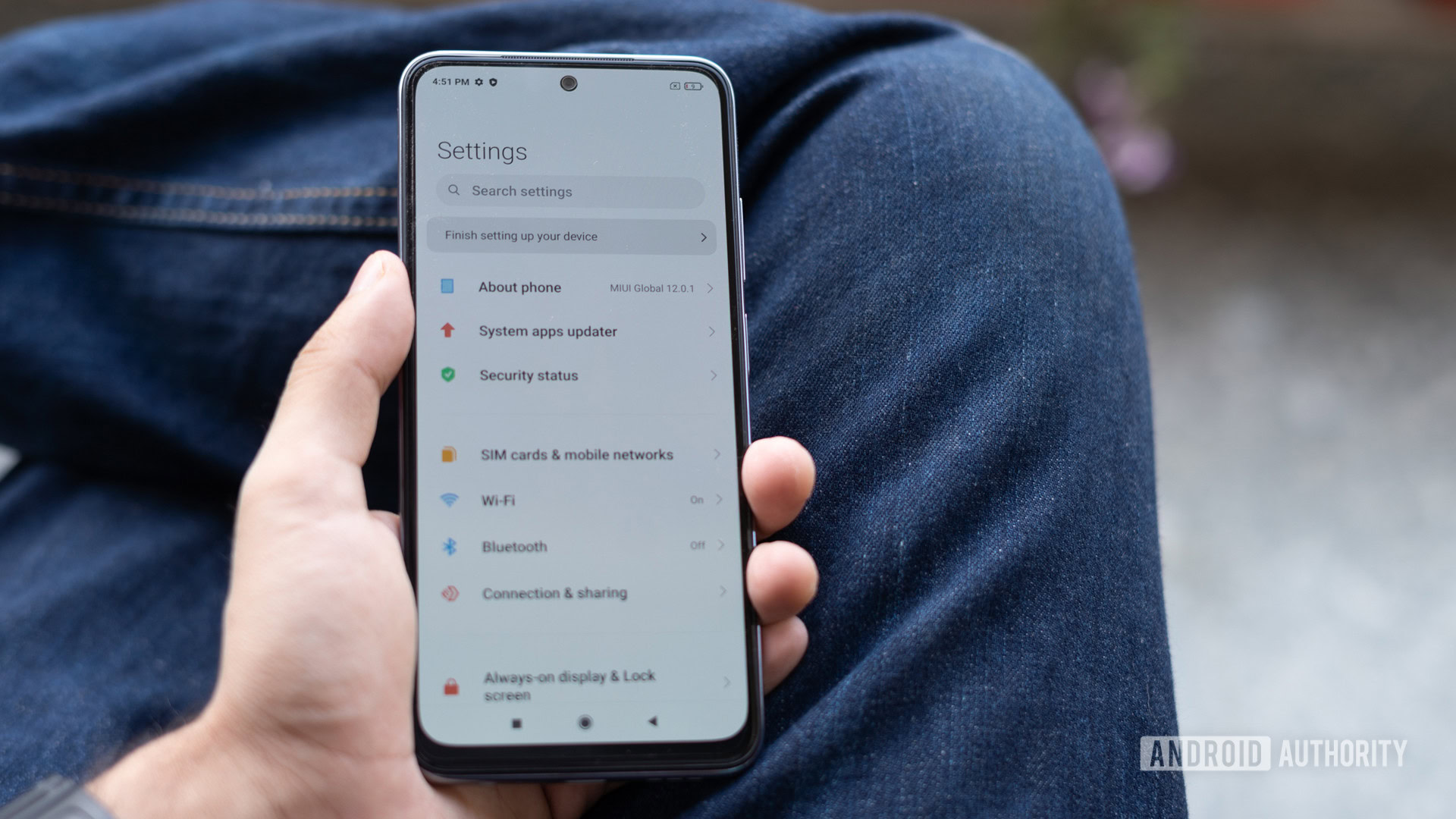
Dhruv Bhutani / Android Authority
The Redmi Note 10 is the first phone to use the Snapdragon 678 chipset; an incremental update over the long in the tooth Snapdragon 675. It’s basically the same chipset, but with a higher clock speed, and as such performance improvements are expected to be minimal at best.
If pure performance is what you’re after, the Redmi Note 10 might not be the best option for you. Phones like the POCO X3 with its Snapdragon 732G easily exceed it in benchmarks. This is particularly noticeable while gaming where the Note 10 doesn’t do all that well with graphics maxed out. While games like Call of Duty: Mobile run just fine with the graphics turned up, the phone warms up noticeably. I’d recommend reducing the graphics settings or sticking to low-end games here.
The Redmi Note 10 offers satisfactory performance for day-to-day use and light gaming.
However, it’s a different story in day-to-day use. The chipset holds its own, and I rarely faced any issues. MIUI 12 is well optimized and feature-rich. Other than a few stray micro stutters during UI navigation, I didn’t notice any major bugs or issues like we’ve seen with some implementations of MIUI. Additionally, Xiaomi has cut down on the notification and ad spam which is definitely a plus point.
It’s clear that Xiaomi is aiming for a mass-market audience over all-out performance here, and that works just fine. The Redmi Note 10 is a well-rounded phone with performance that is satisfactory for day-to-day use and a bit of gaming thrown in.
How long does the battery last?
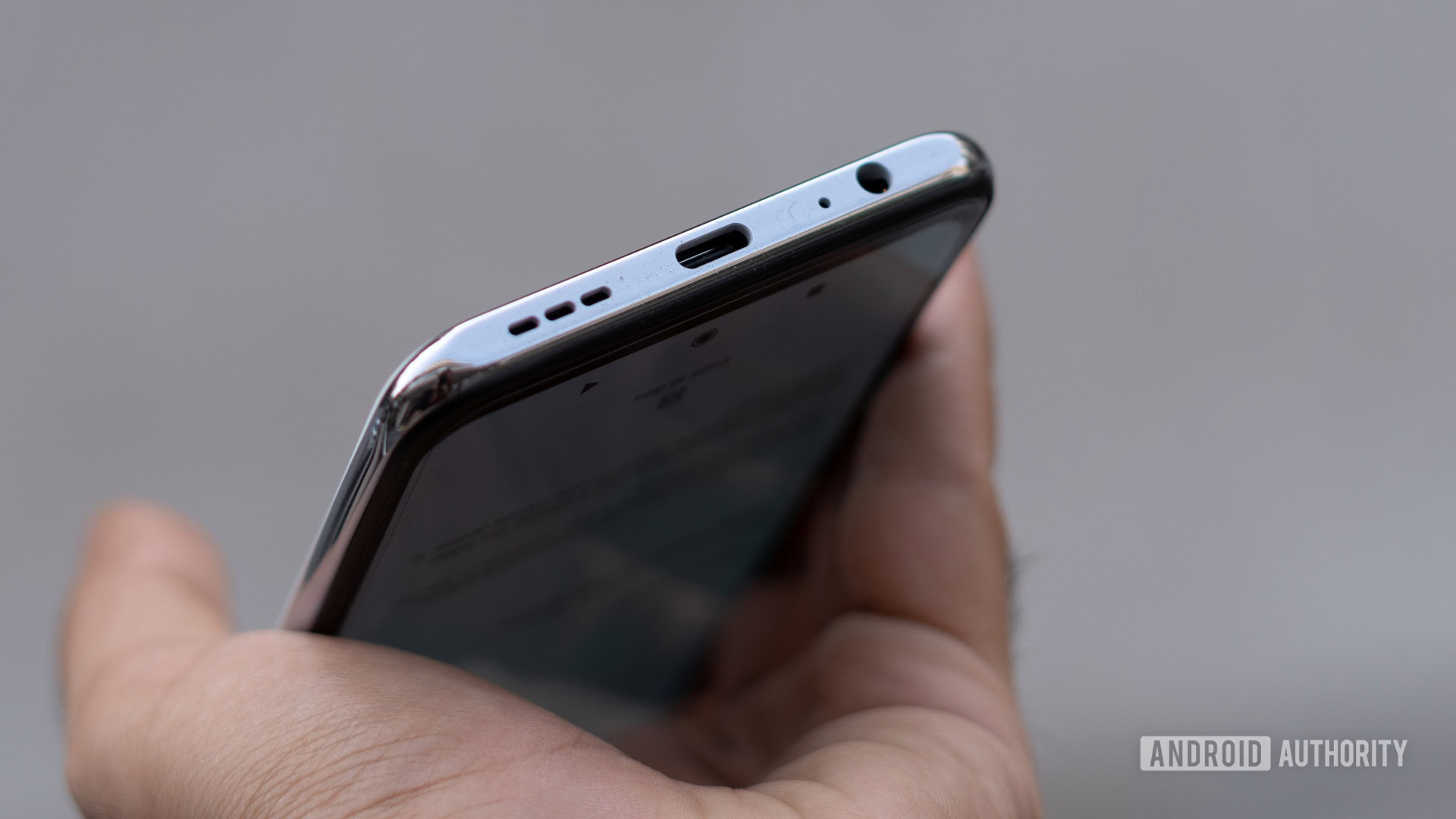
Dhruv Bhutani / Android Authority
A 5,000 mAh battery is table stakes for the budget segment, and the Redmi Note 10 sticks to the norm. As far as battery performance goes, it’s more than enough. The Redmi Note 10 can easily last a full day of use with enough left over to get you a fair bit into the next. With moderate use involving a few calls, social media use, and casual browsing, I got about seven hours of screen on time on average.
33W charging gets you from 0 to 100 in an hour.
The Redmi Note 10 stands out for its fast charging speeds. The Note 10 certainly isn’t the first to offer fast charging but it’s a great addition to have nonetheless. It took about 75 minutes to fully charge the phone, but a half an hour charge gets it to 66% which should be enough for a full day of normal use. There isn’t any wireless charging support, but that’s to be expected at this price.
Is the camera any good?
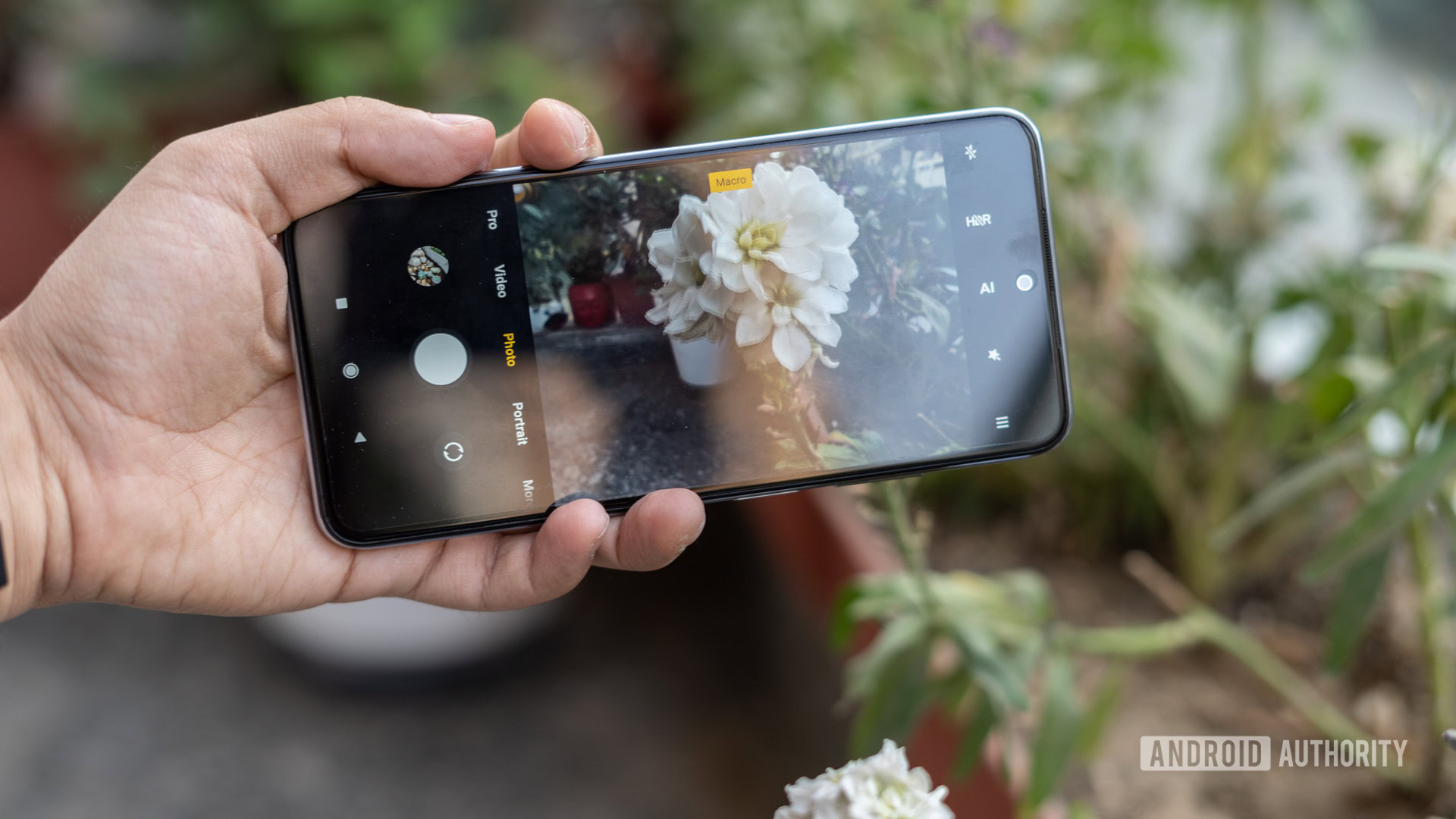
Dhruv Bhutani / Android Authority
While the rest of the smartphone package pushes the gamut in all the right ways, Xiaomi has stuck to its tried and tested camera array for the Redmi Note 10. The setup includes a 48MP primary camera, an 8MP ultra-wide shooter, a 2MP monochrome sensor, and a 2MP macro camera. It’s a pretty straightforward affair.
Out and about in broad daylight, Xiaomi has got image quality sorted. The 48MP sensor is a tried and tested module for the company, and it shows. Images veer towards a natural look with just the right amount of contrast to make the colors pop. Noise levels are in control, and there are sufficient details even in the shadows.
The phone doesn’t have the best HDR performance I’ve come across, and that’s noticeable in how it can often burn out highlights. It’s far from bad though.
I was pleasantly surprised by the indoor image quality as well. Noise levels do go up a bit, but it’s a very usable shot. Dynamic range suffers indoors, and you end up losing out on details in darker regions.
Meanwhile, the ultra-wide camera takes passable images, but 8MP isn’t going to afford you a lot of resolution to crop in. There’s also the matter of white balance variance between the main and ultra-wide cameras. The issue about dynamic range? Yeah, that gets noticeably worse on the ultra-wide sensor.

Dhruv Bhutani / Android Authority
Macro photos from the Redmi Note 10 are impressive in that they certainly let you get up close with the subject. That said, the 2MP resolution doesn’t really do the shots justice. Moreover, Xiaomi is doing a whole lot of post-processing to make the images look clearer. This can produce some odd-looking results as in the case of the flower above. I’d have liked to see Xiaomi’s excellent telemacro implementation here.
Finally, the 13MP front camera captures very good shots with minimal skin retouching and excellent detail. The Redmi Note 10 is capable of capturing 4K video at 30fps, and I observed color reproduction to be a bit dull when compared to the vibrant still images.
Redmi Note 10 specs
SpecsRedmi Note 10
Display
6.43 inches Super AMOLED
FHD+
60Hz
Chipset
Qualcomm Snapdragon 678
GPU
Adreno 612
RAM
4/6GB
Storage
64/128GB
Battery
5,000mAh
USB-C
33W charging
Cameras
Rear:
48MP standard
8MP Ultra-wide
2MP macro
2MP depth sensor
Front:
13MP
Fingerprint sensor
Side-mounted
Software
MIUI
Android 11
Colors
Frost White
Shadow Black
Aqua Green
Dimensions and weight
160.46 x 74.5 x 8.29mm
178.8g
Value and competition
The Redmi Note 10 is a home run for Xiaomi. It focuses on all the right things and offers up a well-polished, value-centric experience. But it certainly isn’t the only option on the market.
There’s also the realme 8 that brings a bit more power under the hood as well as a better-performing primary camera, though it lacks a lot of the polish you get with the Redmi.
For those in Europe, the OnePlus Nord N100 is another potential rival that offers great battery life and the Oxygen OS skin. However, the cameras and performance leave a little to be desired.
Redmi Note 10 review: Verdict
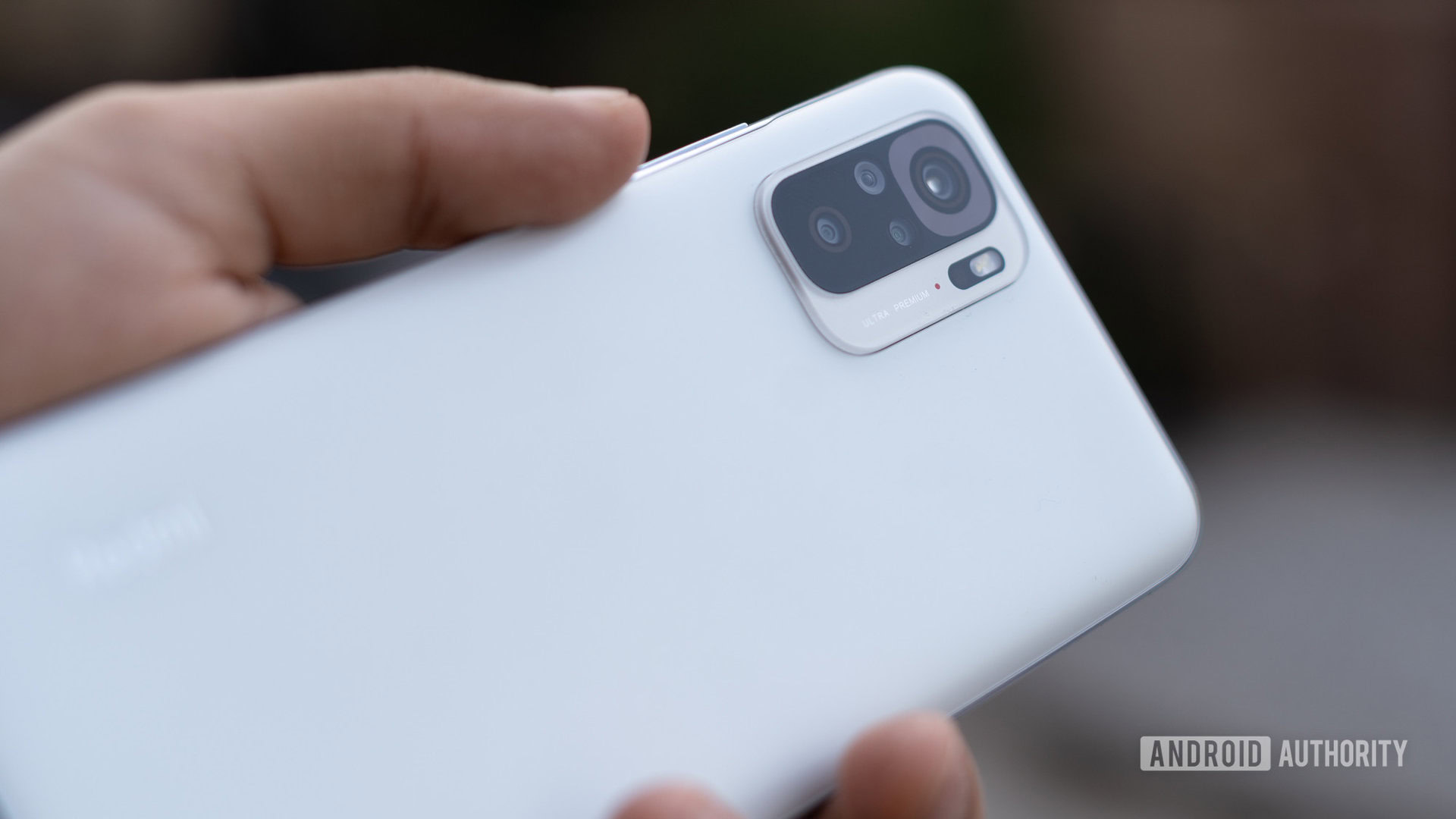
Dhruv Bhutani / Android Authority
The Redmi Note 10 is one of those rare occasions when a phone ticks practically all the boxes — not just in specs but also in execution. The phone looks great, packs an excellent display, good enough performance, and cameras that deliver. What more can you really ask for the money?
A prime competitor is the realme 8 that packs similar specs, and slightly better image processing. However, the realme 8’s design is polarizing to say the least. Likewise, realme UI still lacks the polish to make it an all-out winner.
The Redmi Note 10 is an easy recommendation for almost anyone looking for a no-nonsense smartphone. The budget king is back.
Priced starting Rs. 11,999 (~$163) for the base 64GB storage variant in India or €199/£199 for the standard 128GB model available in Europe, the Redmi Note 10 is a great entry-level choice for any smartphone buyer. The phone isn’t catering to users who just want the maximum power for their money. The Redmi Note 10 is designed for anyone who needs a reliable phone for normal everyday use, and a well-rounded experience that it delivers in spades.











